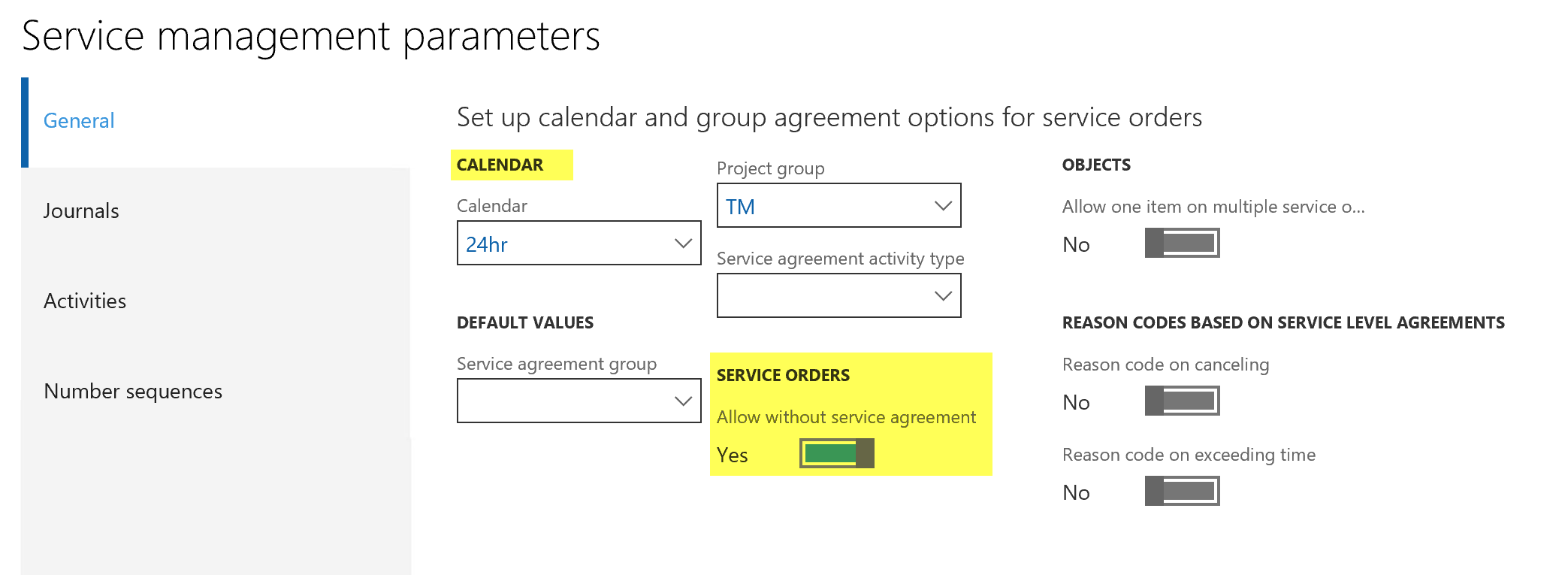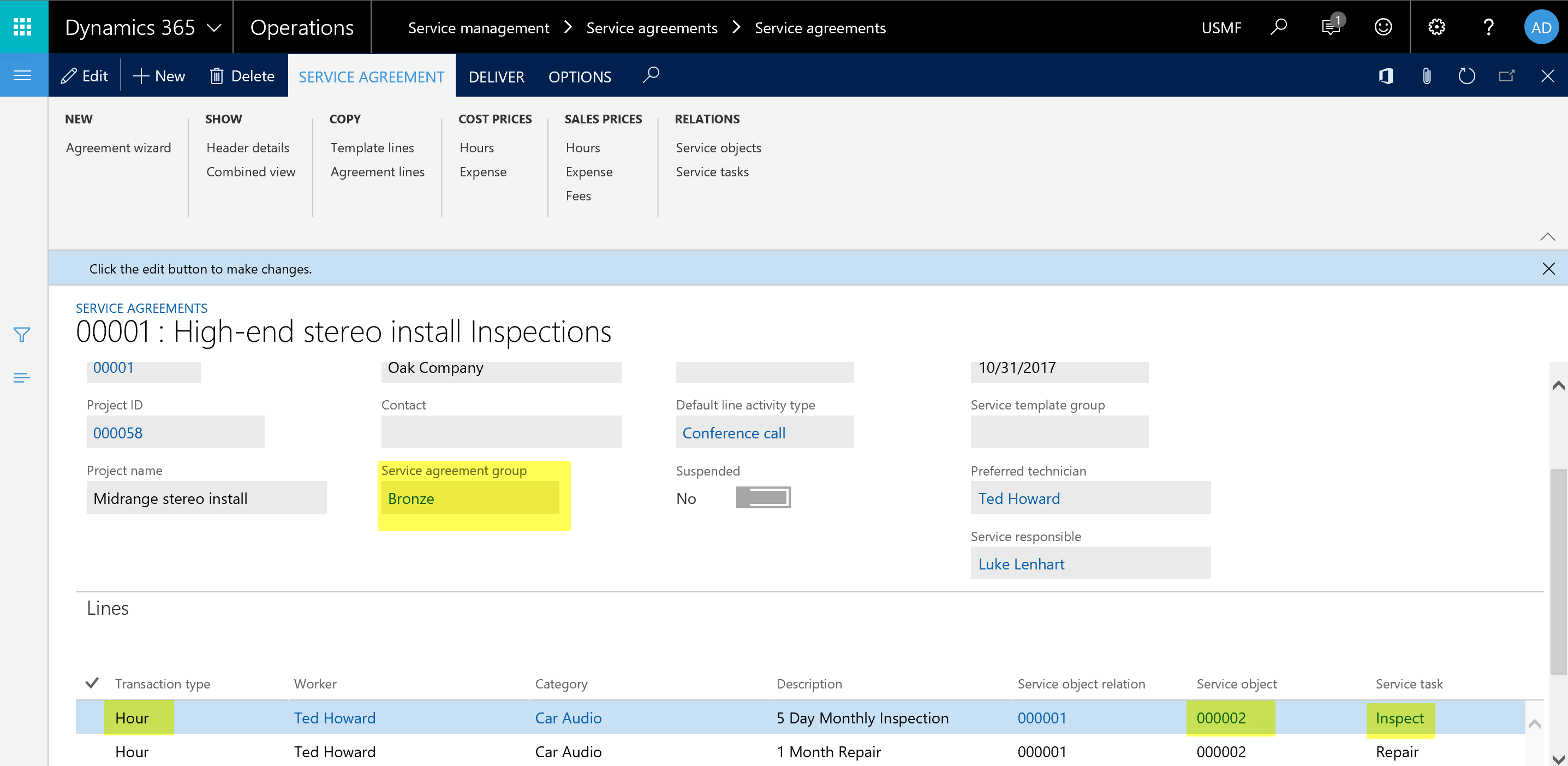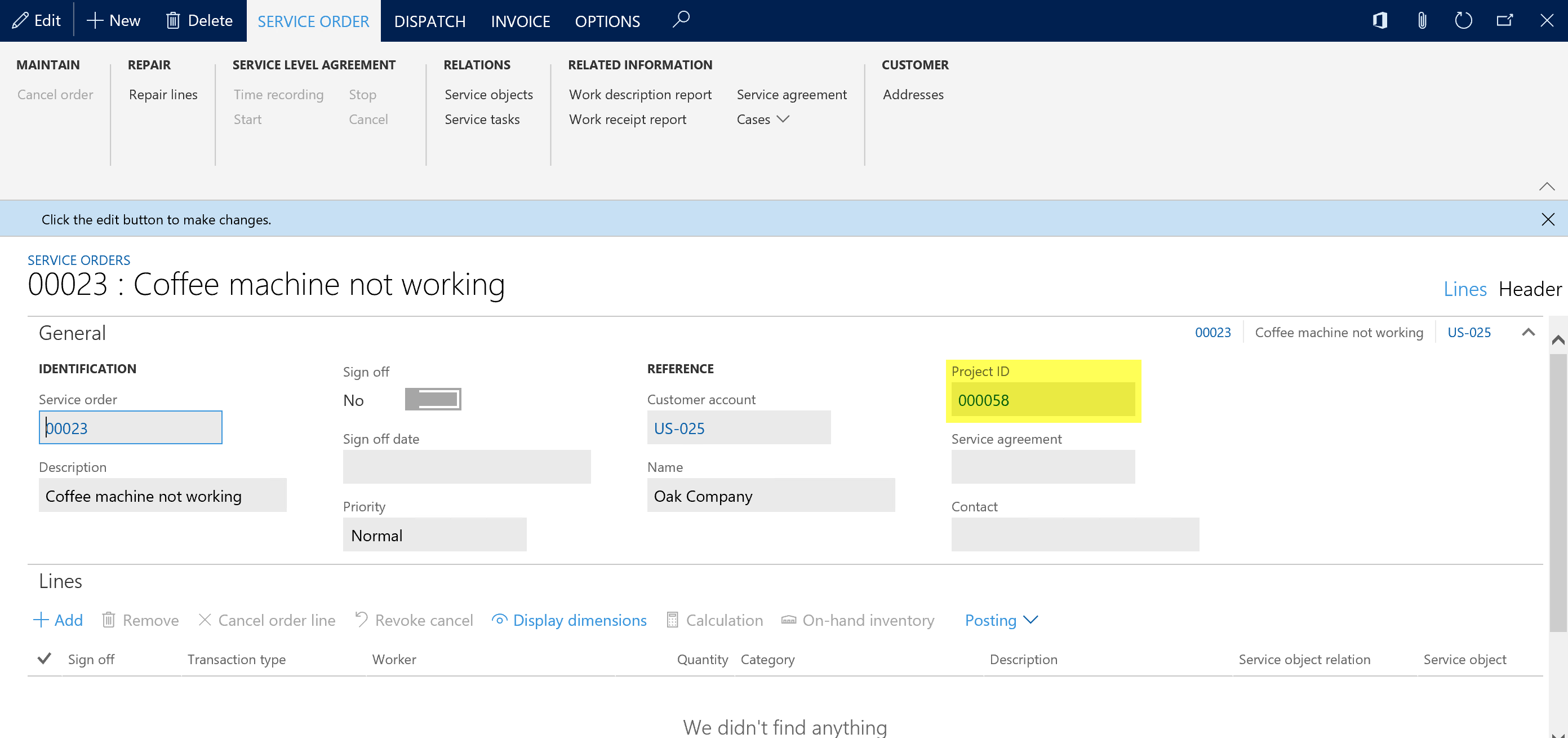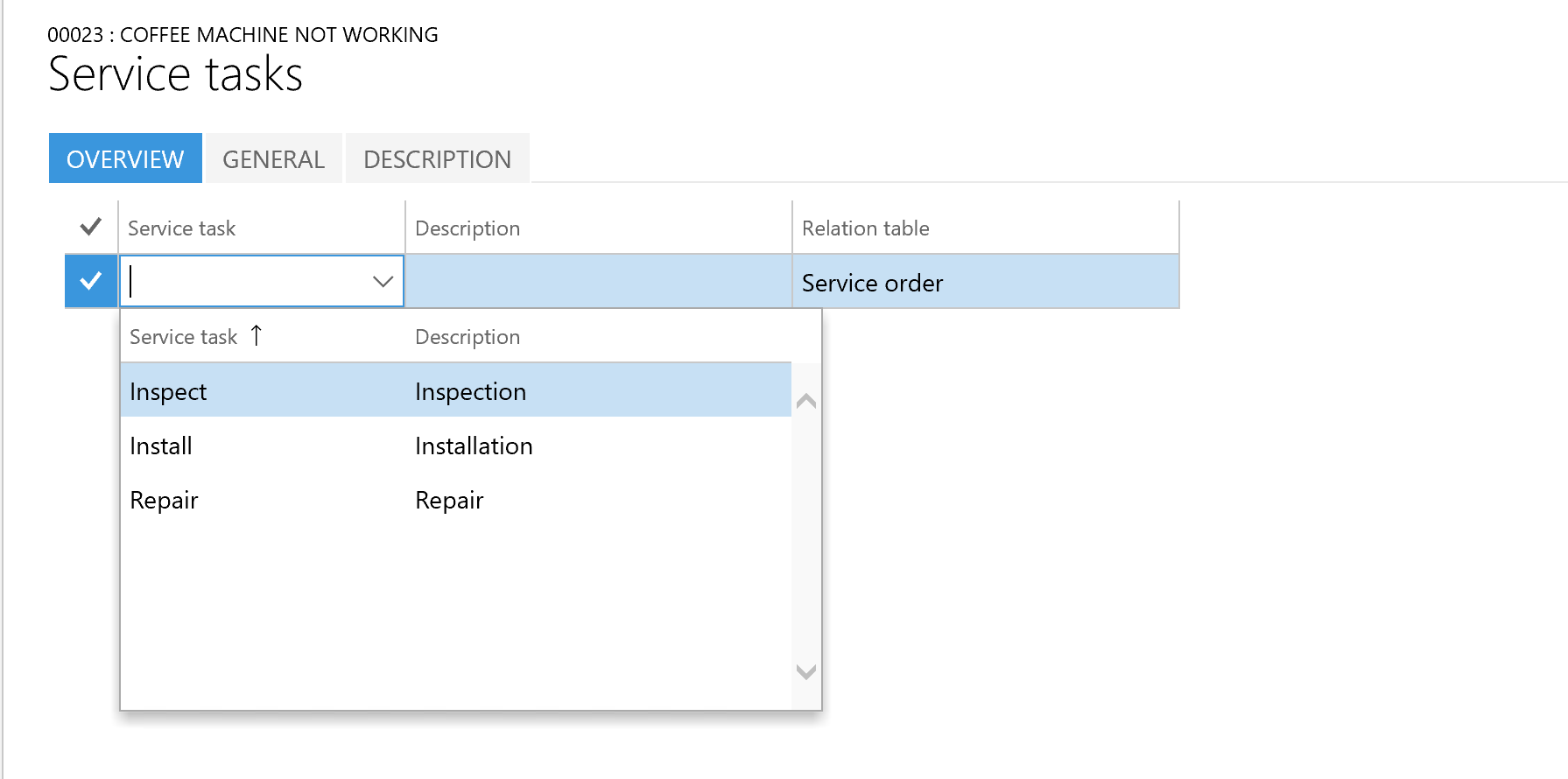The Service management module of Microsoft Dynamics 365 for Operations is a solution for any company that provides service after the sale. For example, a manufacturing company who makes and sells commercial coffee machines may often provide service for those machines. Their policy may include a period of time where the service is under warranty, and then after the warranty expires they will still service the machines for a fee.
This article discusses the various options and capabilities of Microsoft Dynamics 365 for Operations as they relate to managing service orders for a customer. The system is flexible so that it can account for just about every kind of scenario and business rules that a company may have.
In the parameters for Service management, there are a few options to consider.
Service management > Setup > Service management parameters

First of all, the calendar setting allows you to set the times that you will be providing service. These will be calendars you can set up in the Organization administration module.
For many companies, the key setup will be under the Service Orders group, where you can specify whether you need a Service agreement in order to create a service order. The Service agreement is an agreement that specifies your agreement with the company, usually in terms of prices that will be charged, the kind of services that will be provided, the terms of the service indicated by the Service agreement group, and potentially the equipment that will be serviced. The equipment that will be serviced is called a Service object in the system.
Service management > Service agreements > Service agreements

You will also note in this screenshot that there is a Project associated with the Service agreement. A Project is also required for every Service order. The Service management module is, in fact, a subset of the Project module, as it contains all the features of a Project. We will explore this in more depth in a subsequent article.
As you can see in this screenshot, the lines display the type of transaction, which in this case is an Hour, representing an hourly service rate. The rate could be indicated by clicking the Sales Prices group in the action pane, on the Hours section. A rate is not required, however, as it could vary based on the situation.
On the agreement line, you can see a Worker, which is a required field. While this example shows a name, you could also set up a job title in this situation, i.e., Field Technician.
The Service Object represents the actual item that you are servicing for them. As you can see from this screenshot below, this can indicate the serial number of the item for an audit trail. Using the Service Object allows you to track a history of service on the actual item.

Now that we’ve seen a Service agreement, let’s create an actual Service order. You can see a Service order I’ve started in this screenshot for a coffee machine that is not working. I have not referenced a service agreement and I have a project for the customer since that is a required field.
Service management > Service orders > Service orders

The next part to creating a Service order is to add line details. In order to add line details, you will need to have a Service object and a Service task assigned to the service order. This is not just selecting an item from a list as you might do in other areas of Dynamics 365 for Operations; you must actually assign the object and task first, from a list, and assign it to the order.
You can assign a Service object by clicking in the Relations group, Service objects, which takes you to the screen shown here.

You can assign a Service task by clicking in the Relations group, Service tasks, which takes you to the screen shown here.

Now I can complete the Service order, as shown here.

This line states that this will be an hourly charge by Pierre Hezi, who is an apprentice. He will be working on the Service object indicated, and will be doing a repair.
Next month we will talk about finishing up the Service order and the billing that would follow.
For more information about working with Microsoft Dynamics 365 for Operations, check out our eLearning courses at our RSM Technology Academy academy.rsmus.com
by Howard LeCover for RSM

 RSMUS.com
RSMUS.com